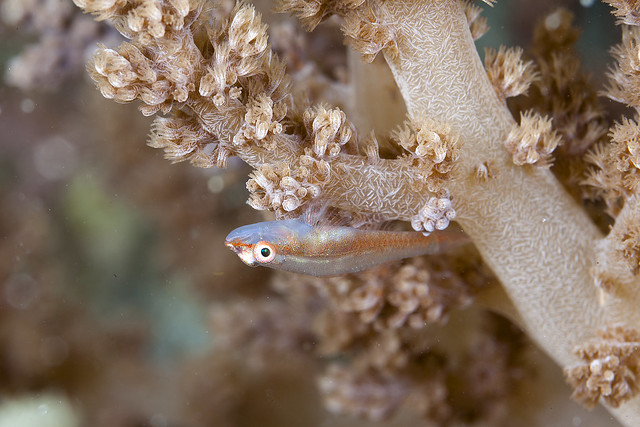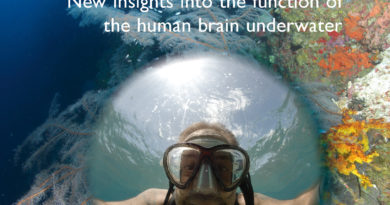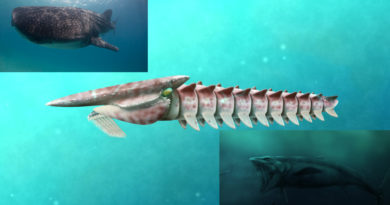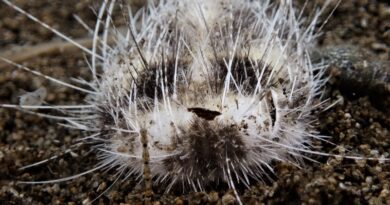Animal Sizes
The folks at Feet First Dive in Nelson Bay had found a vertebra of a whale on the beach. My friend & dive buddy Mandy is holding it next to my back, just behind my own vertebrae (still in use!). The size difference is enormous! Amazingly, there are vertebrate animals (small gobies, carps, tiny rodents & reptiles) which I outsize by a similar order of magnitude which the whale outsizes me!
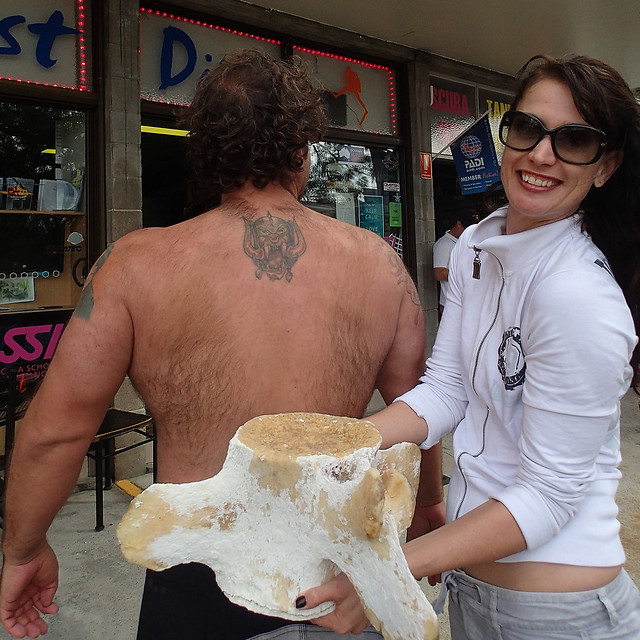
A different set of advantages and challenges comes with being small or being large. In fact, different physical phenomena limit the lifes of tiny and gigantic animals.
Being large is a convenient evolutionary strategy to be safe from predators. Large herbivores also have large digestive systems more capable of fermenting otherwise indigestible plant material. But, maintaining the mechanical stability of a large animal is an issue, and for land animals, the bones need to become proportionally thicker and thicker the bigger the animal becomes. The largest animals ever, the baleen whales, are hence marine, where the water supports their gigantic body masses.
Small animals can often access very specialized food sources, and camouflage themselves very well among their environment. Examples are the camouflage of stick-insects in the tropical vegetation or the pygmy seahorse in soft corals. Circulation and respiration are challenges solved more easily in small bodies, where nutrients and oxygen do not need to diffuse far. But at a certain small size, it seems to become difficult to maintain the complexity needed for a functioning animal body, and many very small species seem to have a reduced “Bauplan” (arrangement of bodily elements).
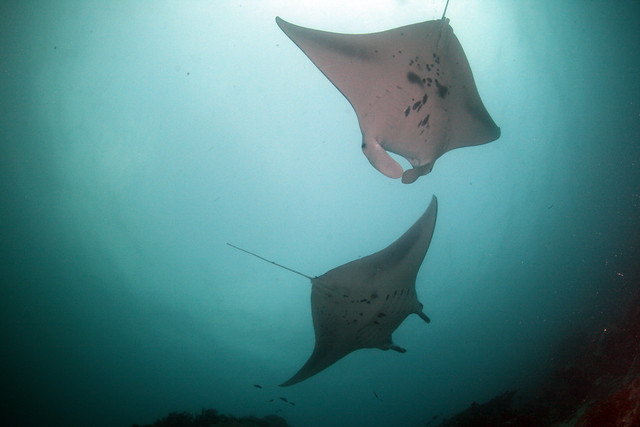
Swimming is more like flying when you are gigantic, and more like crawling through honey when you are tiny, as outlined in the classic paper “Life at low Reynolds numbers”.
Another interesting issue is how animal size and evolution interact. Smaller population numbers on islands often lead to changes in animal sizes. Island populations either produce larger animals (such as the Komodo dragons, out-sizing all other monitor lizards) or smaller ones (pygmy elephants in prehistoric Cyprus). It seems, as if herbivores shrink and carnivores grow evolutionarily when stuck on islands, but these issues are incompletely understood. Basically, a larger animal will inevitably need more resources by head, which will lead to smaller populations per area, and also to a less inert evolutionary process (smaller populations can often evolve faster). So the body size influences the path evolution takes, and a variety of other factors in evolution influence body size. Tons of great science still waiting to be figured out!
